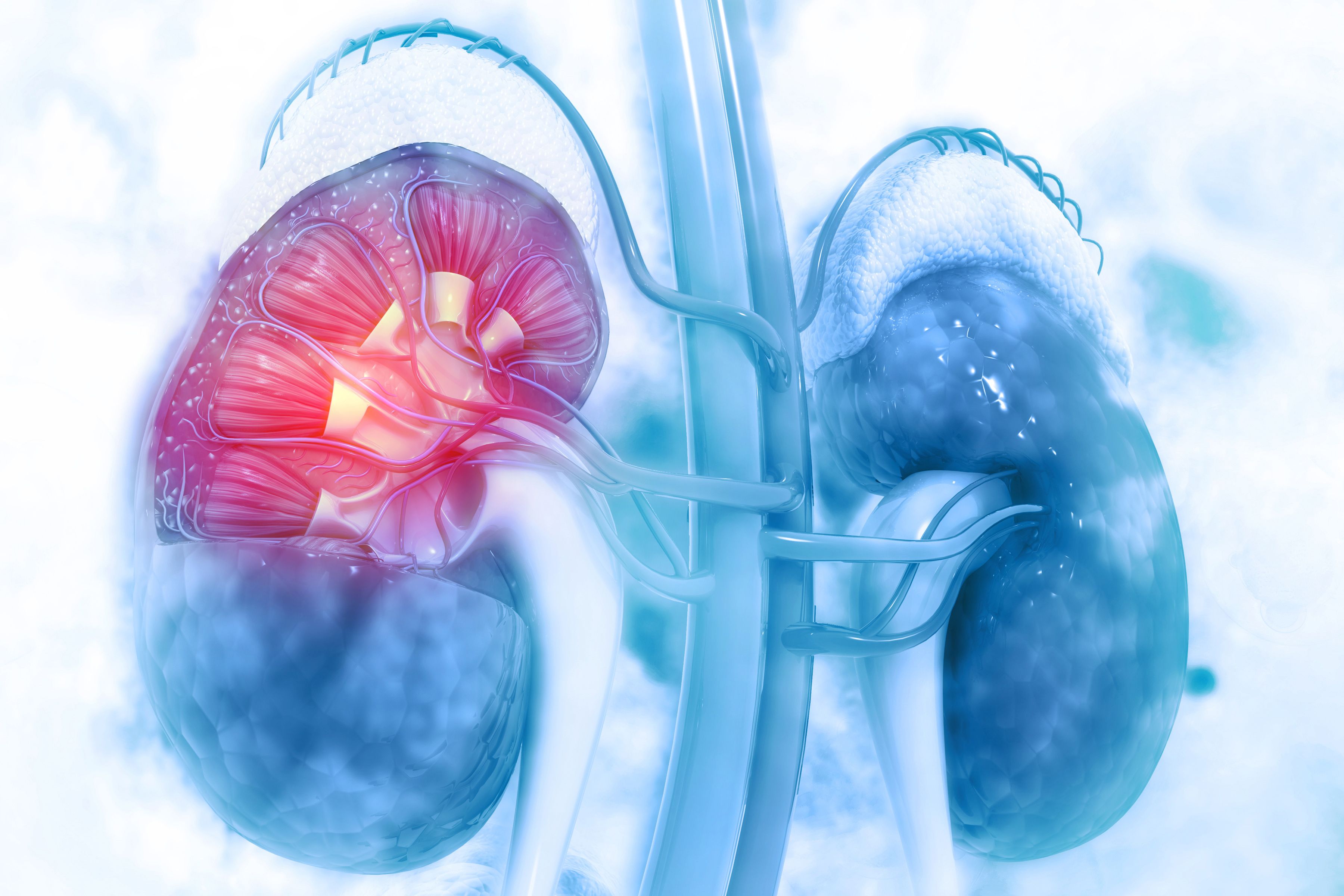Study Identifies Three New Independent Prognostic Indicators of RFS in Renal Cell Carcinoma
Retrospective data suggest that perinephric fat invasion, sarcomatoid or rhabdoid component, and necrosis are independent prognostic indicators of recurrence-free survival in renal cell carcinoma.

In patients with pT3a-predominant renal cell carcinoma (RCC), perinephric fat invasion (PFI), sarcomatoid or rhabdoid component (SC/RC), and necrosis have been identified as independent predictors of recurrence-free survival (RFS), according to research published in the International Journal of Urology.
The presence of more than 1 of the newly identified prognostic features could also indicate even worse outcomes, the study shows.
Based on the implementation of the 2017 UICC TNM staging system for RCC, clinicians already use 5 patterns of extrarenal tumor extension to term a patient’s risk level, and these patterns include invasion of the renal vein and segmental branches, including the microscopic involvement of renal sinus veins, pelvicalyceal system, perirenal fat, and renal sinus fat. However, no studies have explored the connection between these risk factors and oncological outcomes in modern-day. The study, therefore, set out to investigate oncological outcomes in patients with non-metastatic pT3a RCC based on medical records of patients treated at the Kansai Medical University Hospital, Hirakata, Osaka, Japan, between January 2006 and December 2017.
Medical records from a total of 587 patients with non-metastatic RCC patients who underwent radical or partial nephrectomy were selected and investigators led by Haruyuki Ohsugi, MD, of Kansai Medical University, then excluded those who had rare histological subtypes or histological subtypes without recurrence. In the remaining 114 patients, the histological subtypes included were clear cell RCC (ccRCC), unclassified RCC (uRCC), chromophobe RCC (chRCC), and papillary RCC (pRCC). These 114 patient records were evaluated in the retrospective study.
To evaluate the primary end point of RFS, Ohsugi et al used the Kaplan-Meier method with a log-rank test and a Cox proportional hazard model. According to the protocol, the result was statistically significant if a 2-sided P value of < 0.05 was achieved.
The overall study population had a median age of 69.5 years (range, 60.0-76.8) and patients were mostly male (71.1%). The median body mass index in patients was 23.0 kg/m2 (range, 20.9-24.9), and most patients had an ECOG performance score of 0 (98.2%). In terms of surgical approach, the majority of patients in the study underwent radical nephrectomy (85.1).
Other clinicopathological characteristics of the pT3a RCC cohort showed that the median tumor size was 60.0 mm (range, 40.0-80.0), WHO/ISUP grade was grade 3/4 for 55.3%, grade 1/2 for 39.5%, and indeterminable for 5.3%. SC/RC was notably present in 13.2% of the patient population, and necrosis was present in 39.5% The cancer-specific mortality rate in the overall population was 12.3%.
Patterns of extrarenal tumor extension were assessed according to histological subtypes of pT3a RCC. In the ccRCC histological subgroup (n = 93), PFI was present in 31% of patients, sinus fat invasion was present in 35%, segment renal vein invasion was present in 57%, main renal vein invasion was present in 14%, and pelvicalyceal system invasion was present in 6%. In comparison with the 13 patients in the uRCC subgroup, 6 patients in the chRCC group, and 2 patients in the pRCC group, the was no significant difference, sinus fat invasion (P =.877), segment renal vein invasion (P =.312), main renal vein invasion (P =.257), or pelvicalyceal system invasion (P =.786) as they relate to recurrence following surgery. However, presence of PFI was shown to correlate with recurrence compared with the absence of the extrarenal tumor extension (P =.029).
An analysis of pathological prognostic factors for predicting recurrence in patients with PT3a RCC revealed necrosis in about 75% of patients with the uRCC subtype. Further, Ohsugi et al assessed risk stratification using significant predictors in patients with pT3a RCC and found that PFI was independently prognostic for RFS (HR, 2.36, P =.009), as was the presence of SC/RC (HR, 2.88, P =.022), and necrosis (HR, 2.34, P =.030).
The final analysis of the study involved determining how having multiple independent predictors impacted RFS. Patients were categorized as non-high-risk if they had 1 or no factors, and these patients were compared with the remaining patients who were classified as high-risk and pT3a or greater. At the 5-year mark, the RFS rate was 74.6% in the non-high-risk pT3a group.
In the high-risk pT3a group, the 5-year RFS rate was 12.5% with a median RFS of 23 months (95% CI, 6.9-45.7) compared with 10.8 months (95% CI, 2.1-49.3) in the pT3a or greater group (P =1.0). Although there was no significant difference observed between these groups, there was a notable difference between those in the non-high-risk group compared with the high-risk group (P <.0001).
“These findings could aid in risk stratification for predicting recurrence, and provide prognostic information for patient counseling,” wrote Ohsugi et al in conclusion.
Reference:
Ohsugi H, Ohe C, Yoshida T, et al. Predictors of postoperative recurrence in patients with non-metastatic pT3a renal cell carcinoma. Int J Urol. 2021;28(10):1060-1066. doi: 10.1111/iju.14648
Enhancing Precision in Immunotherapy: CD8 PET-Avidity in RCC
March 1st 2024In this episode of Emerging Experts, Peter Zang, MD, highlights research on baseline CD8 lymph node avidity with 89-Zr-crefmirlimab for the treatment of patients with metastatic renal cell carcinoma and response to immunotherapy.
Listen
Beyond the First-Line: Economides on Advancing Therapies in RCC
February 1st 2024In our 4th episode of Emerging Experts, Minas P. Economides, MD, unveils the challenges and opportunities for renal cell carcinoma treatment, focusing on the lack of therapies available in the second-line setting.
Listen